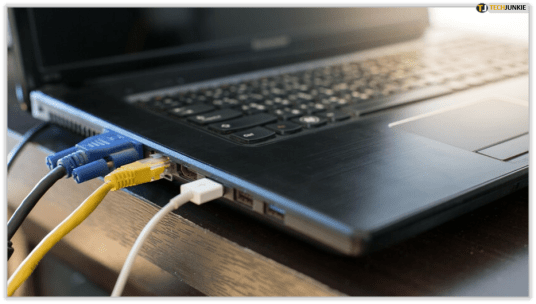Regular Windows updates are important. Sure, it can be rather annoying when the updates carry on when you’re doing something, but overall, it’s good for your computer. So, imagine going through an update and then getting ready to do some work or watch an episode of your favorite TV show, only to realize there’s no sound.

You’d be understandably concerned and wonder what to do, right? But it’s entirely possible that the recent Windows 10 update caused the issue. Here are some ideas about what to do if there’s no sound following an update.
Verify Updates
One of the first things you should do is make sure that the downloaded updates are indeed installed.
- Go to Start>Settings>Update & Security>Windows Update>Check for updates.

- Here you might see one of two things:
- A status that says, “You’re up to date”.
- A status that says, “Updates available”

- If you see the second option, select “Download”.

- Restart your PC and check if everything is working properly.

You should restart your computer, even if it says that everything is up to date. Just to make sure. There’s a chance that the audio will be back on.

Check Your Cables
Before you panic and start to suspect the Windows 10 update, maybe it’s a good idea to check some of the inputs, jacks, and speaker connections. Here are a few things you can do:
- Look for loose cords and cables. Maybe not everything is plugged in properly.
- Ensure that the power is turned on and that the volume is not all the way down.
- Sometimes the mute function is on. Some speakers and apps have their own volume controls.
- Try connecting your speakers or headphones to a different USB port.

Check Your Sound Settings
You should also check your audio devices and make sure that they aren’t disabled.
- Right-click the Speakers icon and then select “Open Volume mixer”.

- When you see a set of volume controls, make sure none of them are muted. If they’re muted, you’ll see a red circle with a line through it.

- Check the device properties and ensure that they were not disabled accidentally. Select Start>Settings>System>Sound.

- Select your device and then “Device properties” for both output and input devices.

- Make sure that the Disable check box is cleared.


Fix Your Audio Drivers
Of all the potential issues, outdated and malfunctioning drivers are what’s causing the most hardware problems. If you can’t hear anything, you should make sure that your audio driver is up-to-date and update it if necessary. But maybe that won’t work. Then you should try uninstalling the audio driver. It will then reinstall automatically. You can also roll back your audio driver.
Updating Audio Driver Automatically
- Go to taskbar search box, type “device manager” and then select it from the results.

- Select “Sound, video and game controllers”.

- Right-click your audio device, like headphones or speakers. Then select “Update driver”, then select “Search automatically for updated driver software”. Then you just have to follow the instructions and complete the update.

Uninstalling Audio Driver
- Go to device manager and select “Sound, video and game controllers”.

- Right-click your audio device and then select “Uninstall device”, followed by “Delete the driver software for this device” check box. Then select “Uninstall”.

- Restart your PC. This restart will prompt your PC to reinstall your audio driver automatically.

Rolling Back Your Audio Driver
- Type in “device manager” then select “Sound, video and game controllers”.

- Right-click your device and then select “Properties”.

- Select the “Driver” tab and then “Roll Back Driver”.

- Follow the instructions on the screen and then select “Yes” to roll back your audio driver.
Different Audio Formats
Another thing that you can do to fix the audio issues you might be experiencing after Windows 10 update is trying different audio formats. Here’s how you do that:
- Go to Control Panel (you can type it in the search box on the taskbar).

- Select “Hardware and Sound” and then just select “Sound”.

- When you see the Playback tab, right-click “Default Device” and then select “Properties”.

- Now, on the Advanced tab, under “Default Format”, change the setting, and click OK.

- Test your audio device. If it doesn’t work, go back and try changing the setting again.

Privacy Settings
If you’re the audio issues you’re experiencing with Windows 10 have to do with the microphone not working, there’s a chance that your privacy settings are not configured properly. Here’s how to do that:
Troubleshoot Your Way to the Sound
When you’re presented with the case of no audio in Windows 10, that’s certainly frustrating. And sometimes it’s difficult to figure out the origin of the problem. The best way to go about it is to just try a lot of different approaches. And if you’re lucky, you’ll fix it quickly enough. If the issue is the Windows update, there are steps you can take. If you didn’t configure your settings right, it can be solved. If your speakers are broken, however, you’ll need to get new ones.
Have you had audio issues with Windows 10 before? How did you solve them? Let us know in the comments section below.
Disclaimer: Some pages on this site may include an affiliate link. This does not effect our editorial in any way.


































